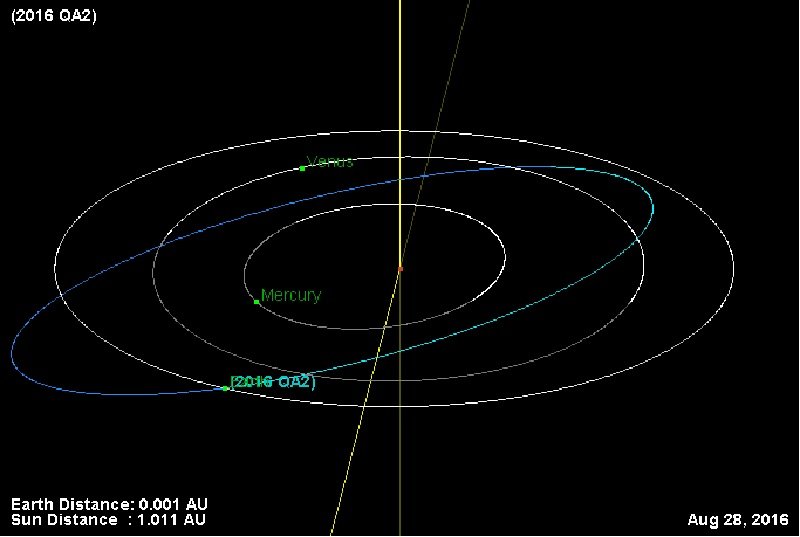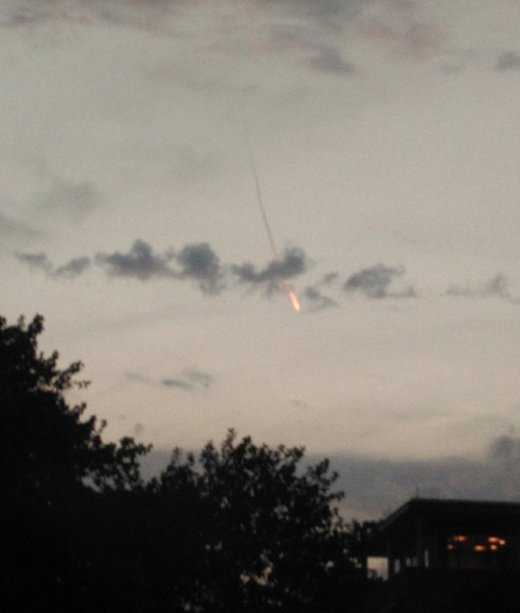Asteroid 2016 QA2 was twice as big as the space rock that entered over Russia in 2013, breaking windows in 6 Russian cities. It passed safely Saturday night

© JPL Small Body Database/Sciencythoughts BlogspotThe calculated orbit of 2016 QA2.
An asteroid safely passed by our planet on Saturday night - August 27-28, 2016 -
just hours after being detected. Astronomers have labeled the space rock as asteroid 2016 QA2. The rocks is estimated to be at least twice as big as the Chelyabinsk meteor that penetrated the atmosphere over Russia in February, 2013.
According to the Minor Planet Center, closest approach to Earth occurred August 28 at 01:24 UTC (9:24 p.m. EST on August 27;
translate to your time zone). The asteroid has an estimated size of 111.5 feet (34 meters), although its exact dimension can range between 52-171 feet (16 to 52 meters).
The speeding space rock came considerably closer than the moon, as it passed at just 0.22 the Earth-moon distance. That's about 52,580 miles (84,619 km) away. For comparison, the moon is located at some 239,000 miles (384,633 km) from Earth.
Asteroid 2016 QA2 was first seen by the
SONEAR Observatory at Oliveira, Brazil.

Comment: Meteor fireball activity has increased dramatically in recent years. A few days prior to this sighting, mysterious house-shaking 'explosions' followed a 'flash of bright white light' around Bristol, which could be attributed to an overhead meteor explosion.